Sponsored by Adobe
You love to draw. You’re a whiz at Adobe Illustrator. You create awesome art that’s used for one client, one project. That’s great, but what if you could get paid for your art to appear on a whole line of holiday cards or posters or magazine illustrations—all over the world? If this idea piques your interest, it’s time for you to consider stock.
Right now, you might be a stock contributor virgin. No worries. Adobe wants to help you become a newbie, and then an expert like the many talented illustrators whose work on Adobe Stock keeps on selling hundreds, if not thousands, of times. It’s one of the ironies of being an illustrator or graphic designer. You do it once and sell it once. Unlike, say, Ralph Lauren or Donna Karan, who design something once and it sells hundreds of thousands of times.
We can’t promise that stock will make you as rich as a top fashion designer, but it can help supplement your income very nicely. Mike McDonald, owner of a small New Jersey design studio, reports that he spends about 90% of his time on client work and 10% on stock. “Interestingly, though,” he says, “about 40% of my income comes from stock.” One of Adobe’s best-selling illustrators is a full-time art director at a California ad agency. Under the screen name “JungleOutThere,” she makes vectors “as a side gig in my spare time” that sell over and over, year after year; many more than 5,000 times, some more than 10,000 times.
Advice from Your Future Buyers
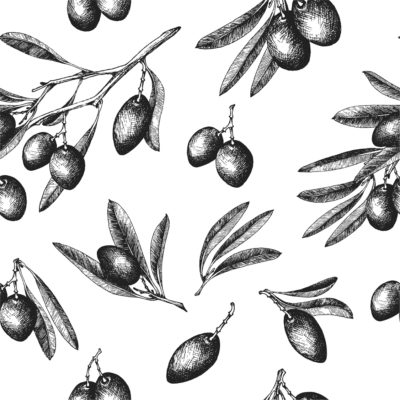
Adobe Stock Vector Olive Pattern #130969421
Graphic designer Sarai Bartels is a whiz at Illustrator, but she often finds herself researching and downloading stock. I know this from personal experience; she became my assistant soon after getting her BFA in Communication Design from Purchase College, SUNY in 2010, and has been freelancing for me ever since—while working in-house at a sports marketing company; as senior designer at a well-known PR firm; and now as a partner in her own studio, Honest Creative, in the Hudson Valley region of New York. Sarai is really, really good at what she does, so why would she need to buy stock vectors and illustrations?
Here’s a typical example: In this project for City Harvest, the largest organization that distributes food to hungry New Yorkers, her concept was to use a vintage olive pattern in various ways. It might have been possible to scan something similar from a book, but there would have been no way to manipulate the elements. By downloading the vector file above, she was easily able to isolate the elements and overlap them, join them, spread them apart, change the colors, and add a solid background.

… as used on invitations and programs for a City Harvest event.
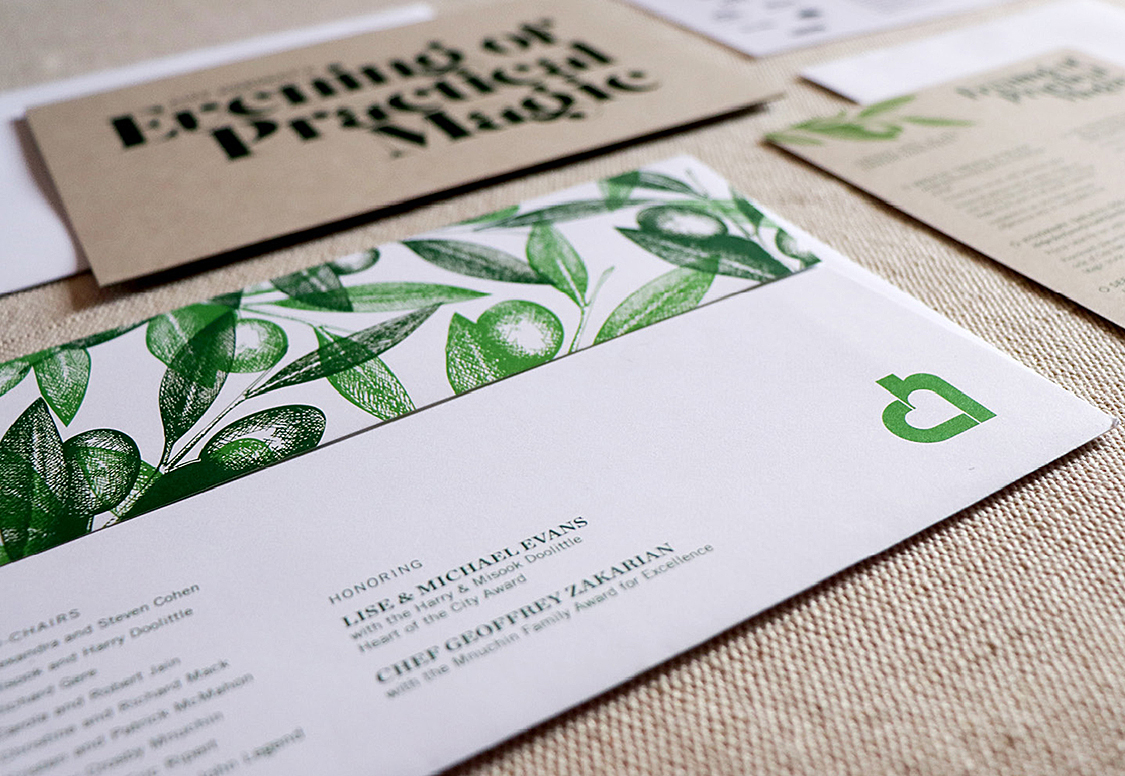
“Why would I start from scratch when what I need already exists?” Sarai answers rhetorically. “I’m not going to draw common objects, like a fork for a restaurant infographic or a pattern for a background.” She’s not referring to the main design concepts, but to elements like decorative letterforms that can be modified so the stock image becomes a supporting element that enhances the concept.
Sarai says that when she finds an illustrator she likes on a stock site—“someone who does their style really well and consistently”—she’ll stick with that artist. And of course she’ll need every file to match. I recently needed vintage woodcut-like vectors of various fruits, berries, nuts and spices for a program for a nonprofit. I found lots of lovely images, but almost nothing matched. Because they were made by different artists, the line weights and qualities were all different. Frustrating. It’s always smart to make sets of objects that “go together” available.
In the gala invitation set below, Sarai enhanced the client‘s theme, “The Renaissance of Healthcare” by beginning with decorative initials and an ornate pattern from Adobe Stock. Because the art was created in Illustrator (Ai) and uploaded as a vector, the elements could be easily isolated and repeated and the colors changed.
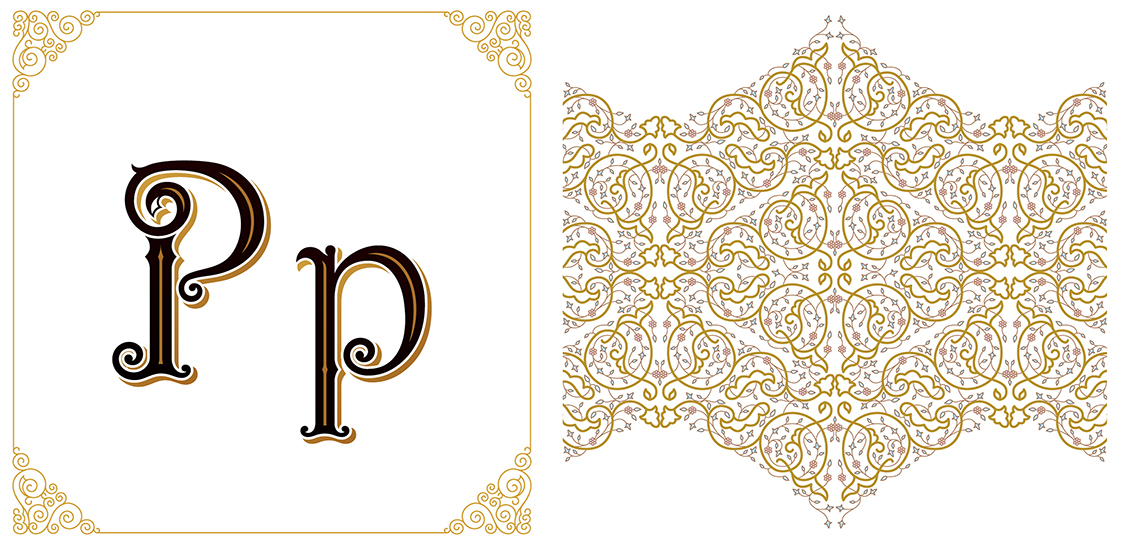
Decorative letterform #167780640 and filigree pattern #162026499
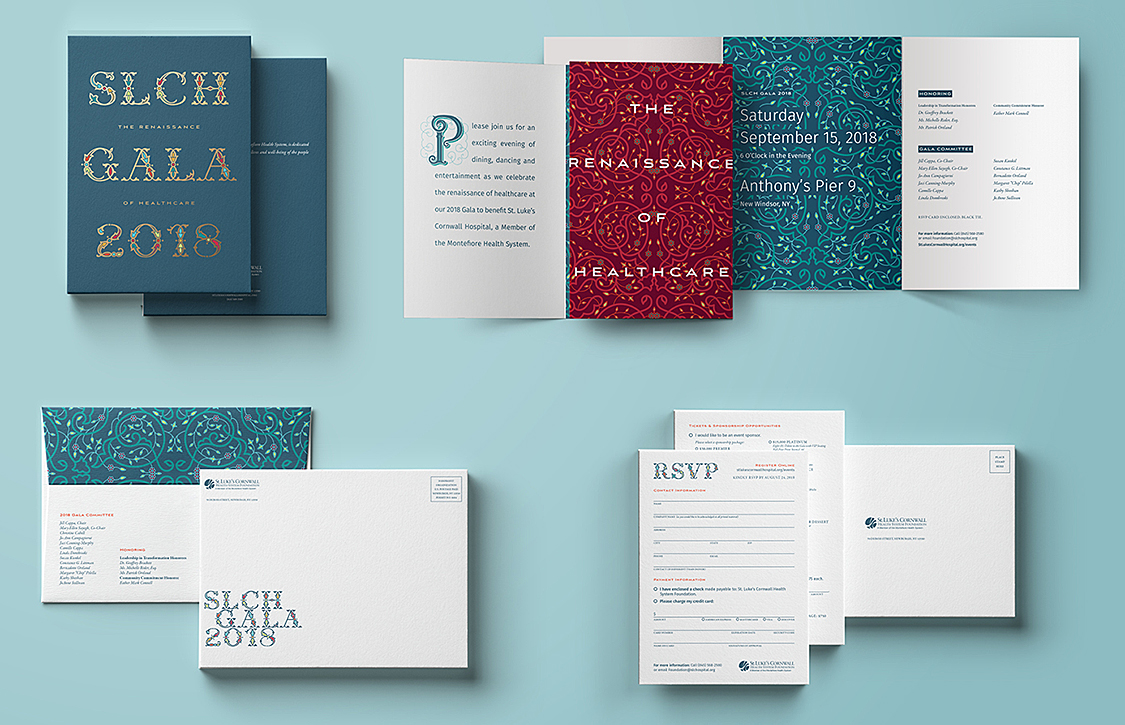
… as used on an invitation package for a hospital fund-raising gala.
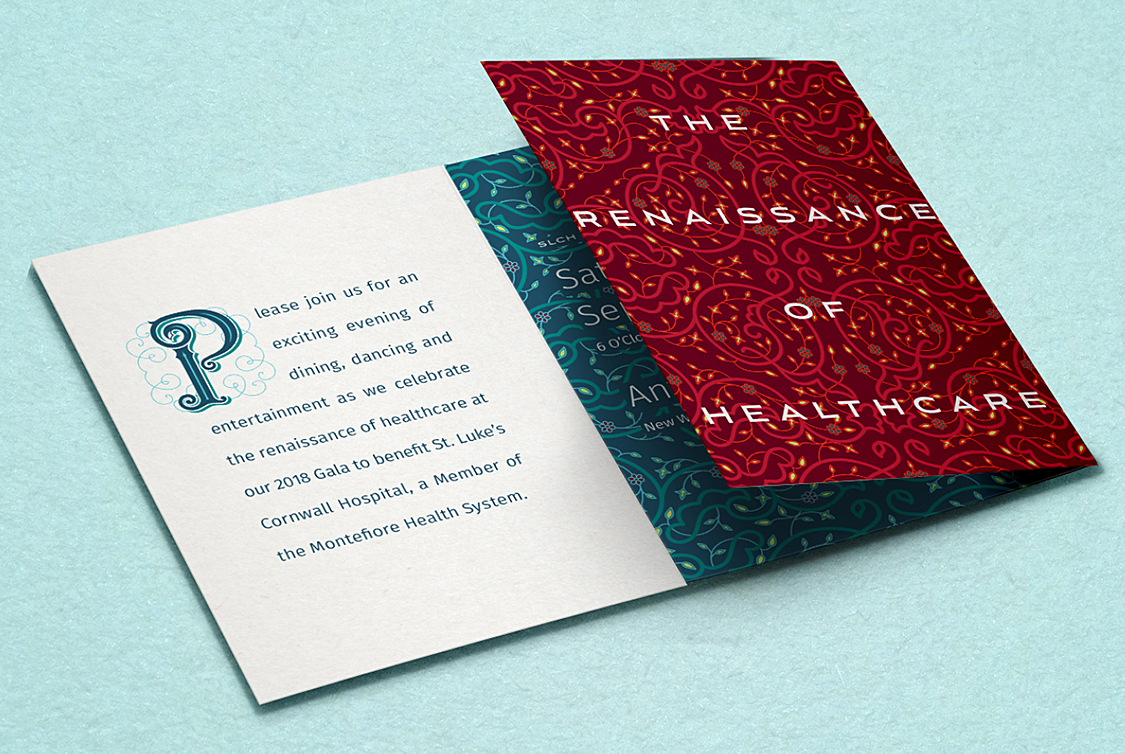
For buyers like Sarai, budget is a factor—especially when the client is a small business or nonprofit organization. That’s where high-quality stock is especially useful. As much as the designer would like to art direct original work, the client is simply not going to pay for decorative hand-lettering or a complex background pattern. Time is also a factor. Sometimes it’s just not practical for the designer to take the time to start with a blank (metaphorical) canvas — especially when the project is something like an e-blast or a news piece that’s got to go out the same or next day.
Lots of Choices Needed
When it’s an important project like an identity program, a press kit with inserts, or an invitation package, smart creatives may spend an hour or more researching each image, searching for the perfect vector or illustration. For Sarai, whose clients include tourism organizations and nonprofits, frequent keyword searches include ‘outdoors,’ ‘transportation,’ ‘cityscape,’ ‘architecture,’ ‘hotel,’ ‘recreation,’ ‘camping,’ ‘restaurant,’ ‘education,’ and ‘economics.’
In the celebration program (below) for City Harvest, not only did the colors and relative positions of the New York City buildings change, but many elements were added to make a unique composition.

New York skyscrapers #97831526.
As the designer of a quarterly magazine devoted to local dining, she may need beer steins and wineglasses for infographics on craft beers and vineyards, which are ideal subjects for a search for vector icons. The time and creativity will go into creating the structure of the infographic and ensuring that data is meaningful, not drawing the basic elements. But when it comes to those elements, there can never be too many choices.
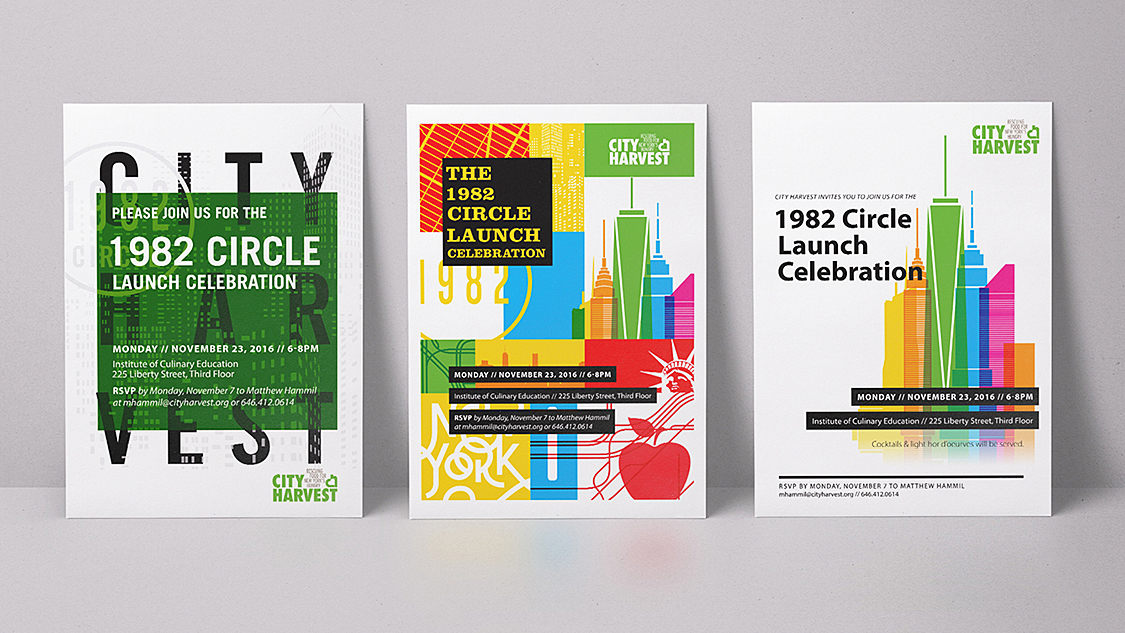
… as used on materials promoting a City Harvest program.
Drawn Well, Of Course
It’s not only the subject matter that makes a stock file perfect, it’s the style and technique. Here’s where you can really make your mark. In addition to researching what’s trending, check out design annuals and popular magazines and websites. Even websites and brick-and-mortar stores like your local Target can be a great resource. Pay attention to the kind of styles that art directors and clients seem to love, and create your own twist on them.
“Drawn well” also refers to the way the file is built. Backgrounds should always be on a separate layer. Objects should be grouped to make it easy to isolate them. Elements that look like lines should be strokes, not shapes with fills, so the user can change the weight. Patterns should be seamless so they’re easy to scale and repeat.

Herringbone Pattern #144014934, Leaf Pattern #54539834, Leaf Icon Set #131422515
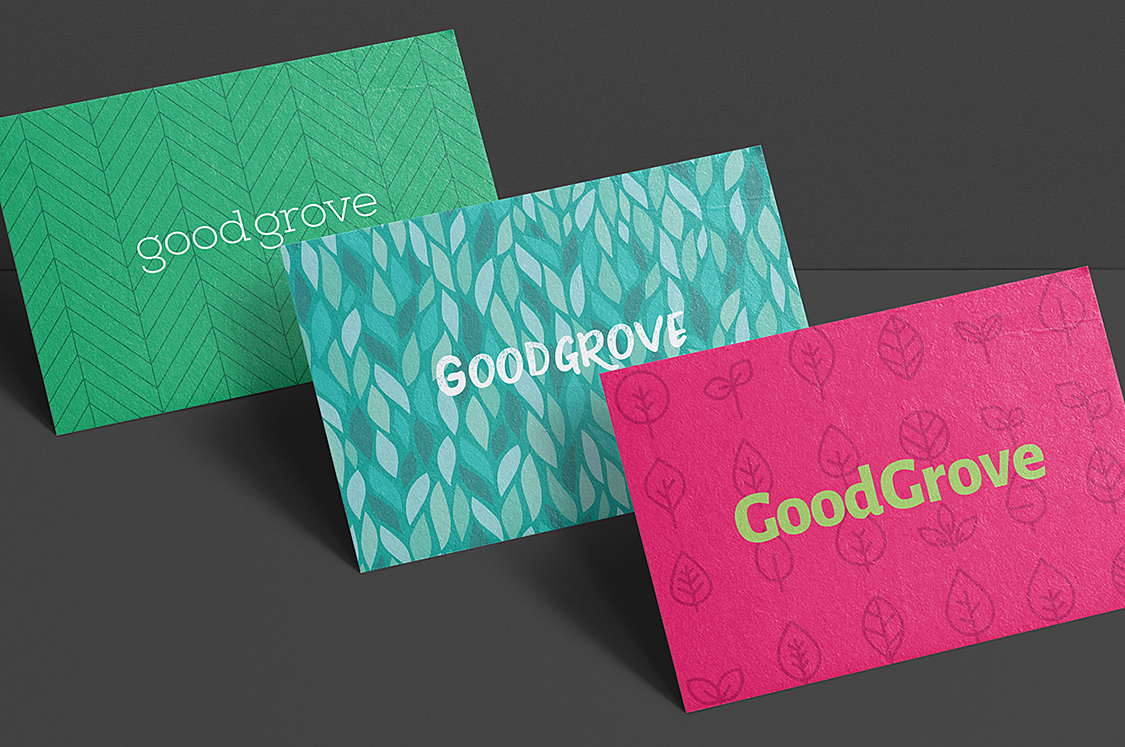
… as used on a greeting card series.
For Sarai, maps are especially important. For me, too. Both of us can recall nightmarish hours spent after downloading map art and finding that everything was on the same layer and nothing was grouped. There went hours separating the water and land, the roads and the type.
Watercolor illustrations can be beautiful, but problematic. Users love beautiful watercolors, especially of food, nature, travel destinations, and holiday subjects, but be sure to scan them and upload as JPEGs. Don’t try to change a scanned painting to vector: no one can work with millions of dots. Keep the background as white as possible and try not to overlap elements so they can be isolated and manipulated in Photoshop.
When Can You Start?
You can start now. But what should you sell in the marketplace? What do buyers need? More of everything—everything that’s tasteful, fresh, and useful. If you think of yourself as the end user and answer the question, “What will make this drawing the most appealing, the easiest to work with?” it’s most likely you’ll enjoy success. Texas-based illustrator Natalia Hubbert has had great success with subjects she considers “essential to most of the modern world,” including family, food, nature, seasons, technology, and fashion. She has fun with pin-up girls and fantasy characters, too, which are enduringly popular.
You might be intrigued with the possibilities Adobe Stock offers, and wondering how many illustrations you’ll need to upload to see an increase in your income. According to Mike McDonald, a collection of 300 to 400 images can bring in reasonable earnings. “With 800 images, sales can really add up to a viable income. Some new artists submit 10 to 20 images and get frustrated by low numbers. It takes time to build a portfolio with work that’s in high demand,” he advises. “Those early submissions aren’t going to generate much, but they will lead you to discover sales trends, what will sell. And don’t let a portfolio sit idle. New images need to be uploaded regularly to maintain sales.”
Your Next Gig with Adobe
Right now, Adobe is offering a special reward to its top Adobe Stock contributors: a full year of free Adobe Creative Cloud to those who’ve had 300 or more pieces of content approved or have earned $500 or more this year. Want to get there? “Be persistent,” Hubbert advises, “create high-quality content, make as much use out of your base illustration as you can by creating different variations and layouts.
If you’re interested in bringing your illustrations and vectors to a worldwide audience of buyers, you can sign up to become an Adobe Stock contributor today—it’s free to sign up!







